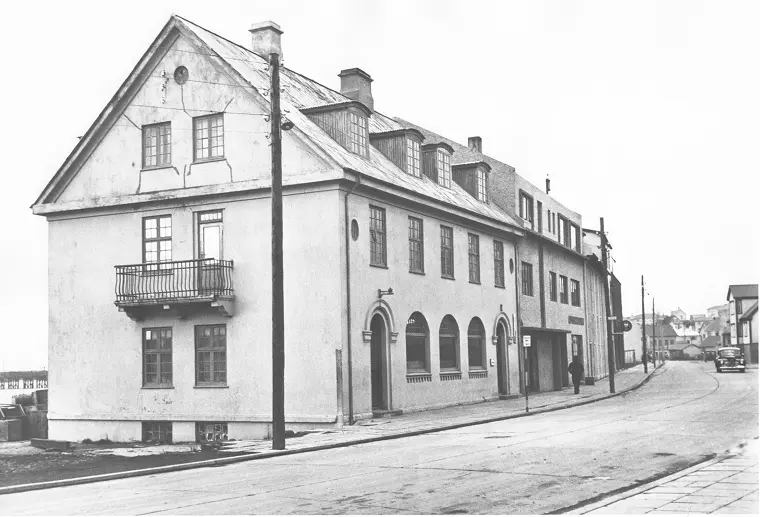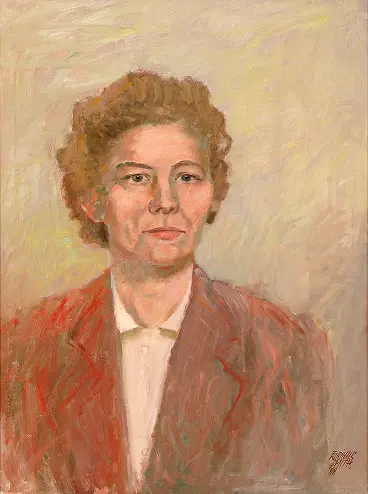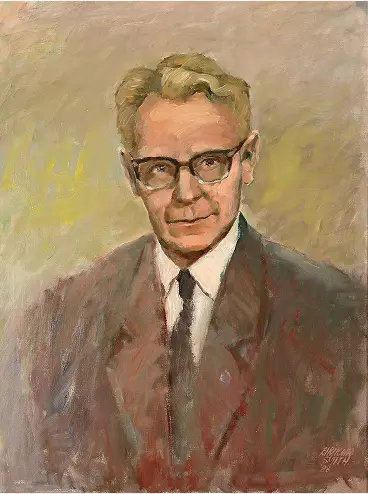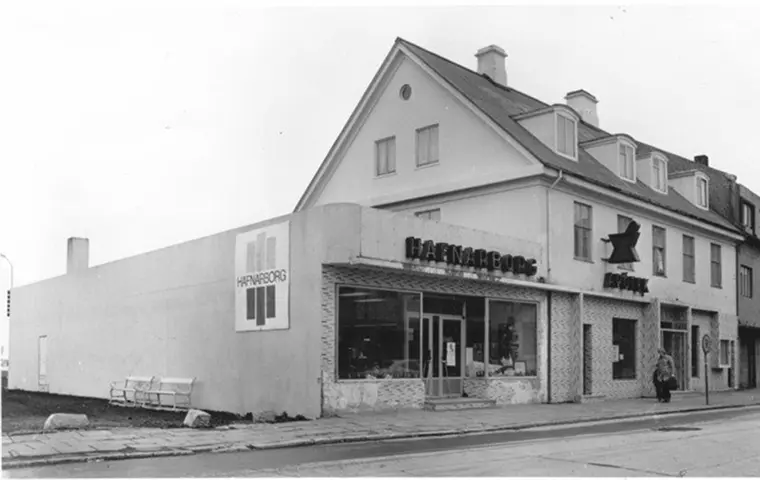Hafnarborg – the Hafnarfjörður Centre of Culture and Fine Art was founded in 1983, becoming the home of the town’s art collection.

The founders of Hafnarborg were Sverrir Magnússon, a pharmacist, and his wife, Ingibjörg Sigurjónsdóttir, a pharmaceutical scientist. They laid the foundation of the museum and its collection with the donation of their home and art collection to the town.
On June 1st 1983, they officially presented Hafnarfjörður with a gift certificate for the building at Strandgata 34 and an extensive art and book collection. Sverrir and Ingibjörg stipulated that the building should house a cultural institution with the aim of strengthening the artistic and cultural life in Hafnarfjörður. It was to include an art museum, exhibition halls, and a residency for artists, in addition to serving as a venue for concerts. They also decided that the institution’s name should be Hafnarborg, named after a shop the couple ran for a time next to their pharmacy.


The Inauguration of Hafnarborg
Hafnarborg was formally inaugurated on May 21, 1988, after the new extension had been built. The inauguration took place during a festive ceremony with a large crowd in attendance, where Þorsteinn Pálsson, the Prime Minister at the time, officially declared the institution open.
To mark the occasion, Hafnarborg was presented with gifts: portraits of Sören Kampmann, Ingibjörg Sigurjónsdóttir, and Sverrir Magnússon. All three portraits were painted by the artist Eiríkur Smith.
The museum’s inaugural exhibition was a solo show by Eiríkur Smith, who was himself born and raised in Hafnarfjörður. For this occasion, he exhibited 31 oil paintings and 33 watercolors.

The Building
The building was originally designed by architect Guðjón Samúelsson, one of his first projects, with its construction completed in 1921. Like Guðjón’s other works from this period, it shows influences of neo-baroque and Nordic national romanticism, which can be seen in the arches and ledges on the side facing Strandgata. The house was designed as a pharmacy and residence for pharmacist Sören Kampmann, but in 1947, Sverrir and Ingibjörg took over the business, running the Hafnarfjörður Pharmacy (Hafnarfjarðarapótek) there until 1984. They commissioned several alterations around the mid-20th century, based on drawings by architect Rögnvaldur Johnson.

Today, Hafnarborg consists of three distinct sections. Each part has its own characteristics related to its period of construction and its current function. The handover of the building took place in phases, with the last section to be incorporated being the space formerly occupied by the pharmacy.
The old pharmacy was on the ground floor in the center of the original building, with its entrance on Strandgata. When the Hafnarfjörður Pharmacy moved to the Fjörður shopping centre in the mid-1990s, the space became the meeting hall for the Hafnarfjörður town council. The hall is also used for workshops, meetings, and lectures.

On the upper floor of the old building are the staff offices, as well as a guest apartment in the attic which is rented out to artists-in-residence. In the rooms that once faced the harbour (but now look onto windows inside the museum’s main hall), there are educational spaces. These are used for artistic activities and as information and learning spaces for visitors. In 2015, the rooms were renovated to enhance their functionality. They now house part of the Hafnarborg library and allow for audio and video presentations without disturbing the exhibitions.
To the southwest is a large extension, built in stages during the 1980s and designed by architect Ingimar H. Ingimarsson. It contains the reception and café area on the ground floor and an exhibition hall on the second floor. In designing the extension, an effort was made to bridge the gap between the old and the new by repeating certain forms from the original building in spirit of postmodernism.
On the ground floor, on the south side of the old pharmacy, is an exhibition hall that opened in 1990. It is named Sverrissalur (Sverrir’s Hall), after Sverrir Magnússon. It connects to a foyer that leads into the café area, featuring large, arched windows that face the car park at Fjörður and are a defining feature of the building.
